I have a two-dimensional array that I use to represent a character's location in a game, which I will refer to as a grid. The grid is a 5x5 size grid. Not all of the tiles/locations on the grid are viable locations upon which the character may traverse. In the example image, you can see that three of the locations are water instead of land, indicating locations that the character cannot access.
In traversing the grid, only using the four cardinal directions (up,down,left,right) I want the character to find the shortest viable path to reach a destination. For example, if it starts at [1,2] and needs to reach location [3,2], I would like for it to move: up -> right -> right -> down.
Here is what I currently have in place for identifying viable solutions; there is something not quite right with it, but I can't figure out where my logic is going awry:
DartPad Example for interactive functional code.
import 'dart:collection';
class Point {
int x;
int y;
Point({required this.y,required this.x});
}
void main() {
print('Finding a viable solution for the shortest path...');
var grid = [
['','','','',''],
['','','','',''],
['','','','',''], // Character is at position grid[2][1]
['','','','',''], // Destination is position grid[2][3]
['','','','',''],
];
var characterPosition = Point(y: 2, x: 1);
var characterDestination = Point(y: 2, x: 3);
PathFinder pathFinder = PathFinder(grid, characterPosition, characterDestination);
if (pathFinder.solutionExists) {
print('...Solution exists!');
for (Point point in pathFinder.solution) {
print('(${point.y},${point.x})');
}
}
else {
print('...No solution exists.');
}
}
class PathFinder {
late Queue<Point> solution;
late bool solutionExists;
PathFinder(grid, characterPosition, characterDestination) {
// Applying BFS on matrix cells.
Queue<Point> queue = Queue<Point>();
queue.add(new Point(y: characterPosition.y, x: characterPosition.x));
List<List<bool>> visited = List.generate(
grid.length,
(index) => List.generate(
grid[0].length,
(index) => false,
growable: false,
),
growable: false,
);
visited[characterPosition.y][characterPosition.x] =
true;
while (queue.isNotEmpty) {
Point point = queue.removeLast();
// Destination found
if (point.x == characterDestination.x &&
point.y == characterDestination.y) {
this.solutionExists = true;
this.solution = queue;
return;
}
// moving up
if (_isValid(x: point.x, y: point.y - 1, grid: grid, visited: visited)) {
queue.add(new Point(y: point.y - 1, x: point.x));
visited[point.y - 1][point.x] = true;
}
// moving down
if (_isValid(x: point.x, y: point.y + 1, grid: grid, visited: visited)) {
queue.add(new Point(y: point.y + 1, x: point.x));
visited[point.y + 1][point.x] = true;
}
// moving left
if (_isValid(x: point.x - 1, y: point.y, grid: grid, visited: visited)) {
queue.add(new Point(y: point.y, x: point.x - 1));
visited[point.y][point.x - 1] = true;
}
// moving right
if (_isValid(x: point.x + 1, y: point.y, grid: grid, visited: visited)) {
queue.add(new Point(y: point.y, x: point.x + 1));
visited[point.y][point.x + 1] = true;
}
}
this.solutionExists = false;
this.solution = queue;
return;
}
bool _isValid({required int x, required int y, required List<List<String>> grid, required List<List<bool>> visited}) {
if (x >= 0 &&
y >= 0 &&
x < grid[0].length &&
y < grid.length &&
grid[y][x] != '' &&
visited[y][x] == false) {
return true;
}
return false;
}
}
If you run this (using DartPad), you can see that the output is:
Finding a viable solution for the shortest path...
...Solution exists!
(1,1)
(3,3)
(1,4)
This output isn't quite what I had expected, meaning I've clearly messed something up. I'm having trouble figuring out what exactly I should do to properly implement this path finding algorithm, so any insight, suggestions, or help would be greatly appreciated! Thank you in advance!!

